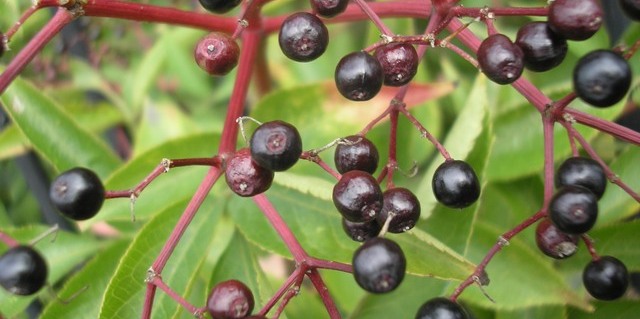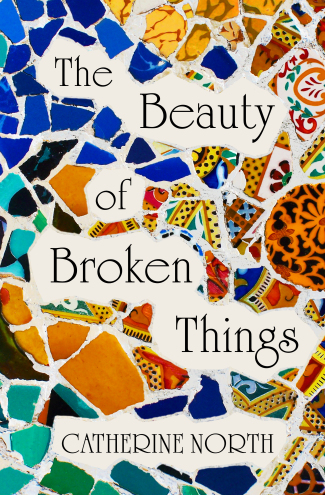Autumn is my favourite time of year.
As any forager knows, this is the season where there is abundant free fruit. You may think that the urban landscape makes for slimmer pickings but some wonderful fruits commonly grow in cities and on scrub land – if you take the time to look.
I know that with the pace of modern life most people don’t think there is time for making old fashioned cordials and preserves. Perhaps it is time to look at these ‘archaic’ past times with a fresh and practical perspective? Yes, it takes an afternoon to collect the fruit and to make something from it, but it’s important to note that many of these free fruits contain an impressive list of vitamins and minerals. 
Given the price of food these days, surely a free source of nutrients has to be a positive? Plus, when you make your own jams, chutneys and cordials you have the satisfaction of knowing where the ingredients have come from. Foraging for fruit is one of life’s simple pleasures and even people who don’t usually enjoy going for a walk can get hooked. There is a unique enjoyment in making tasty things from your free haul and in setting things by for winter. To be able to go to your cupboard in December and pick out a jar full of summer is a rewarding feeling.
Brambles, a rich source of vitamins A, C, E and K, are a perennial whatever the landscape, and seem impervious to industrialisation, thriving wherever they appear. The glossy black fruits are plentiful but unfortunately many people don’t know what to do with them. Anyone who has made a crumble or a pie from them is already aware of how seed-ridden they are. But don’t be put off – as long as the fruit is cooked and then strained through a piece of cheesecloth to remove the seeds they make an excellent ingredient in cordials, jams and jellies. Whatever recipe you choose, remember that brambles are low in pectin so should always be paired with apple or the juice of a lemon to enable your concoction to preserve or to set correctly.
 Elder trees are almost as persistent as brambles and manage to squeeze up through paving, often brightening concrete jungles with their summer flowers and autumn berries. Elderberries are not as well regarded as elderflowers but they are just as medicinally useful and brim-full of goodness. They contain vitamins A, B6 and C, along with calcium, iron and magnesium, making them something of a free vitamin boost.
Elder trees are almost as persistent as brambles and manage to squeeze up through paving, often brightening concrete jungles with their summer flowers and autumn berries. Elderberries are not as well regarded as elderflowers but they are just as medicinally useful and brim-full of goodness. They contain vitamins A, B6 and C, along with calcium, iron and magnesium, making them something of a free vitamin boost.
Elderberries have a long history of being used to make liqueurs and wines, with elder jelly also being a traditional favourite. I am particularly fond of homemade elderberry cordial with my personal preference being to mix it with crab apple. This intensifies the elderberry flavour and the pectin from the crab apple also helps the cordial to keep longer. However, the most valuable purpose for elderberries (to sustain you over the long winter months) is Elder Rob. This traditional medicinal syrup is very popular in many European countries and is used to ward off colds and as a cure for the flu. I keep a bottle in the fridge to battle those nasty winter bugs but have been told that a spoonful mixed with hot water and brandy or whisky is also the perfect winter warmer. Elder Rob it is essentially an immune-boosting remedy which just happens to taste pretty good. There are many versions of the recipe. Here is mine:
Elder Rob
Roughly 500g – 1 kilo of elderberries
I small piece of ginger root, grated
3 cloves
200g of honey
100g of dark brown sugar
Method:
Fill the pan with 1 pint of water and pluck the elderberries off each stalk with a fork. Begin to heat the contents and allow to simmer for at least 30 minutes, use a potato masher to mush up the berries to release more juice. Once you can see they have broken down, remove from the heat and strain through a sieve with a piece of cheesecloth in it. Leave the contents of the sieve to drip through for a few hours – I usually leave it for about 12 hours. Then you can even squeeze the cheesecloth to release the very last drops of the liquid, bearing in mind the juice can stain.
Return the elderberry juice to the pan along with the ginger and cloves for 30 minutes, allowing the juice to reduce a little. Strain again through a cheesecloth then return the sieved juice to a clean pan and reheat, adding the honey and the brown sugar. Once the sugar and honey have dissolved boil for a further 5- 10 minutes, then remove from the heat and decant into a sterilised glass bottle. Once cooled, label and refrigerate. You can then add a tablespoon or two to a cup of warm water to drink when needed.
Another common urban tree is the Rowan, also known as Mountain Ash. Rowans are often used to fill empty city spaces and are mainly chosen because they don’t grow very large. They bear attractive red berries which are incredibly high in vitamin C and liberally blessed with vitamins D and E too. Rowan berries are medicinally useful, possessing an action which corrects the way the body eliminates uric acid, and consequently they are very beneficial for people suffering arthritis, rheumatism and gout. The berries are widely believed to be toxic which is probably due to an acid they contain. When eaten raw this acid can cause stomach upset. However, after the first frost or once the berries are popped in the freezer, this acid is greatly reduced. When the berries are cooked the acid is completely eliminated. Rowan berries are used to make wines, jellies, chutneys and marmalade. Their extract is even used commercially in the manufacture of a wide range of foods and beverages. I make a batch of rowan & crab apple jelly every year and although I’m not a huge fan my other half loves it. It makes the perfect accompaniment, I am told, to cheeses and cooked meats.
Whatever your circumstances, creating edible goodies from the free fruits around you is definitely worth a try. No processed cordial will ever be as good as your own made from scratch, no jam bought from a supermarket will ever taste quite as real as the one you made from those brambles. So, what are you waiting for?
Happy Hunting.
Main image: elderberries
DISCLAIMER: These are some of my personal experiences combined with information I have researched over a number of years. I am not encouraging people to self-medicate, in the treatment of specific conditions it is best to consult a herbalist or your GP. If you should develop an adverse reaction to any of the herbs mentioned above please stop using them immediately. Always take care when identifying plants.











